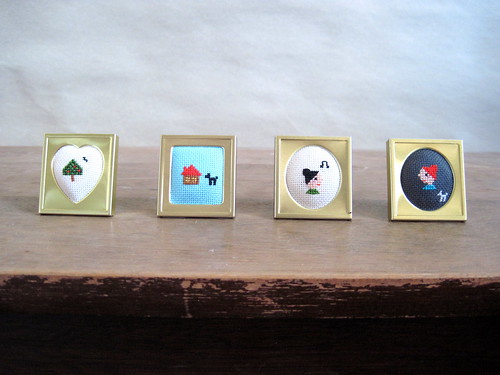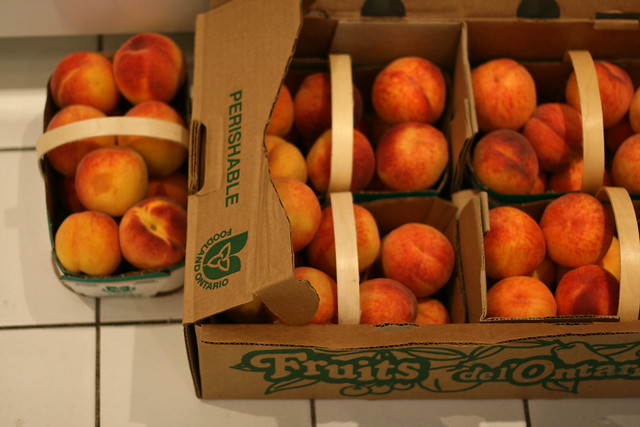
On Sunday a few of us got together at Thea's to can peaches! This wonderful fruit is at its best right now and we really wanted to capture its deliciousness and preserve it for future enjoyment.
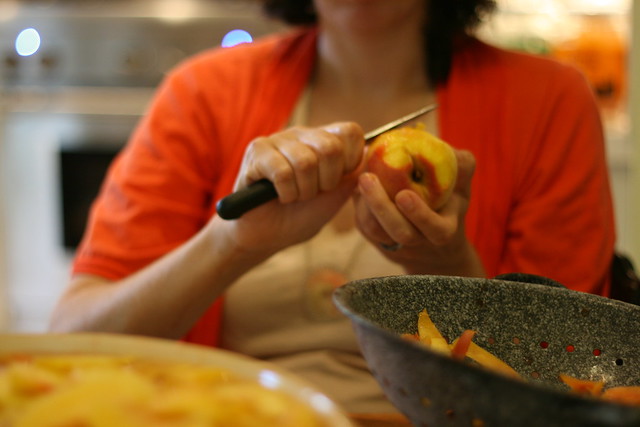
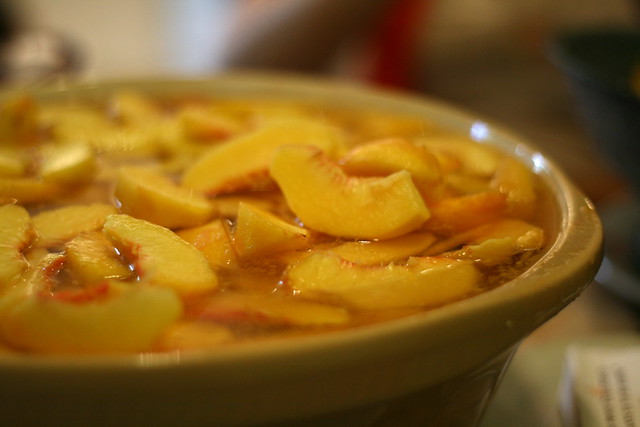
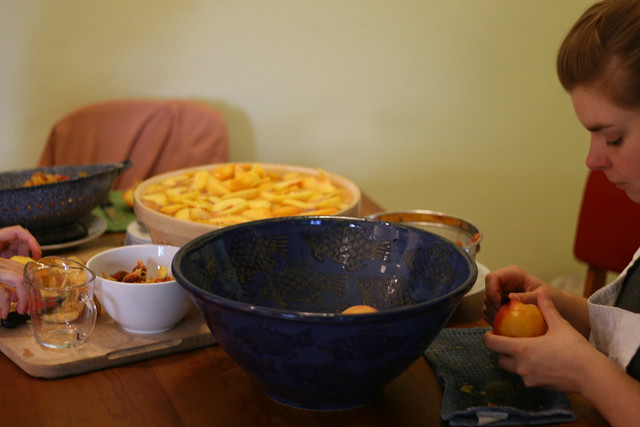

The most time consuming and messy part of canning peaches is the peeling and slicing bit. The more hands helping out, the better! In order to make the peaches easy to peel, we blanched them in boiling water for 30-50 seconds. Then we peeled them, sliced them, and put the slices in a bath of water with lemon juice in it. The lemon prevents the fruit from darkening unattractively.
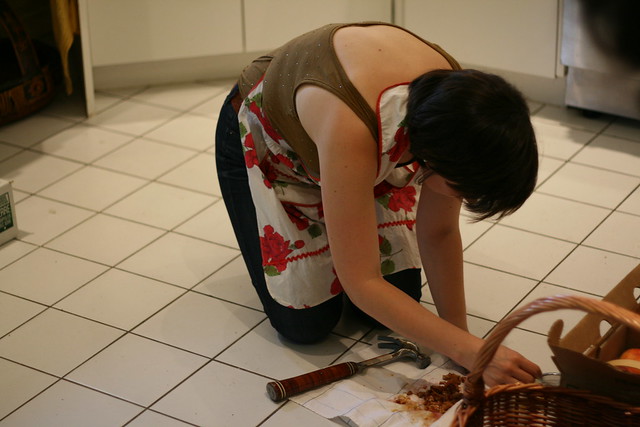
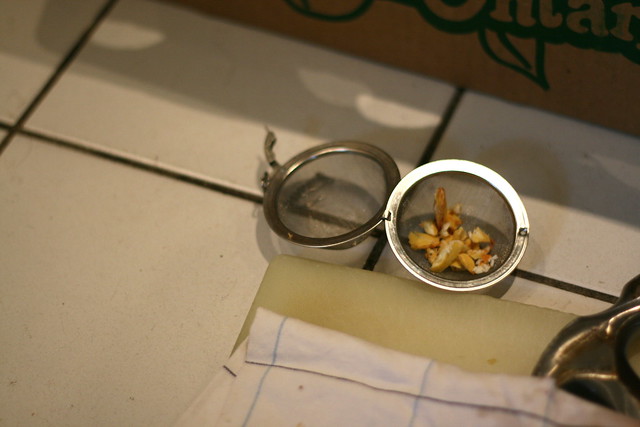
Thea informed us that peach pits contain pips that have an almondy scent and flavour (peaches and almonds are related after all). So she cracked a few pits open with a hammer, and put some pips in a tea infuser, which we placed in the syrup to give it a slight almond flavour. Yum!

In batches, we added the sliced peaches to our sugar syrup mixture. We made a medium syrup, a combination of 6 cups of water with 3 cups of sugar. The peaches were cooked in the syrup for 5 minutes. This is the "hot pack" method of canning, since the fruit is heated before being canned. It's the most commonly used method for preserving fruit since it is a bit safer, and makes it easier to get the fruit in the jars. You can also "cold pack" or "raw pack" the fruit by putting it in without cooking it in the syrup, and then pouring the hot syrup on after.

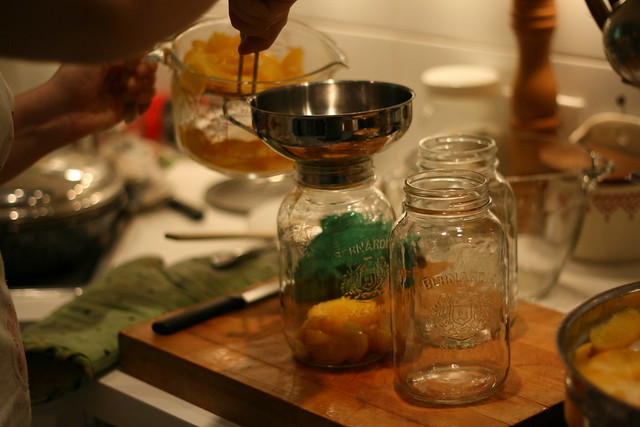
With a slotted spoon, we ladled the peaches into hot sterilized jars, then added the syrup until there was about 1'' headspace. Wide mouthed funnels are a canner's best friend.
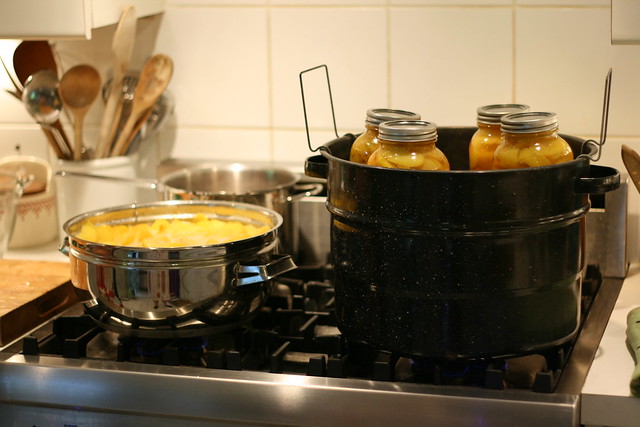
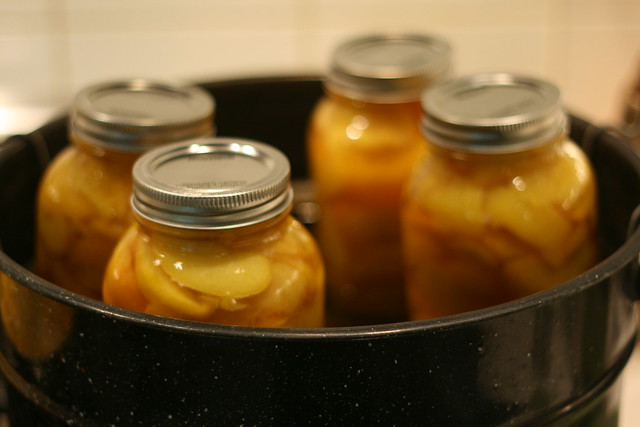
We processed the canned peaches in the canner for about 20 minutes.
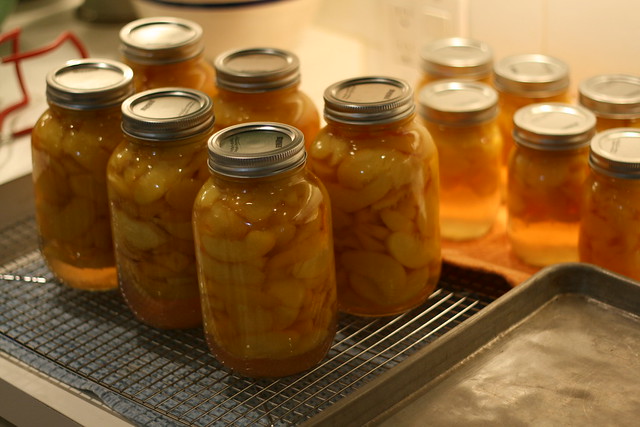
Et voila! Peaches galore! They will provide a wonderful taste of summer in the cold dark days of winter. Yum.




The most time consuming and messy part of canning peaches is the peeling and slicing bit. The more hands helping out, the better! In order to make the peaches easy to peel, we blanched them in boiling water for 30-50 seconds. Then we peeled them, sliced them, and put the slices in a bath of water with lemon juice in it. The lemon prevents the fruit from darkening unattractively.
It's best to can peaches that are just beginning to soften. If they're too soft, they may just fall apart when cooked. If they're too hard, they're a major pain in the derriere to peel.


Thea informed us that peach pits contain pips that have an almondy scent and flavour (peaches and almonds are related after all). So she cracked a few pits open with a hammer, and put some pips in a tea infuser, which we placed in the syrup to give it a slight almond flavour. Yum!

In batches, we added the sliced peaches to our sugar syrup mixture. We made a medium syrup, a combination of 6 cups of water with 3 cups of sugar. The peaches were cooked in the syrup for 5 minutes. This is the "hot pack" method of canning, since the fruit is heated before being canned. It's the most commonly used method for preserving fruit since it is a bit safer, and makes it easier to get the fruit in the jars. You can also "cold pack" or "raw pack" the fruit by putting it in without cooking it in the syrup, and then pouring the hot syrup on after.


With a slotted spoon, we ladled the peaches into hot sterilized jars, then added the syrup until there was about 1'' headspace. Wide mouthed funnels are a canner's best friend.


We processed the canned peaches in the canner for about 20 minutes.

Et voila! Peaches galore! They will provide a wonderful taste of summer in the cold dark days of winter. Yum.





























